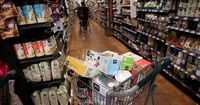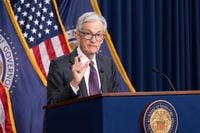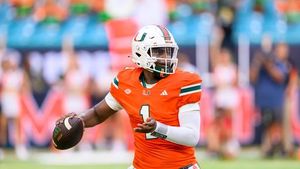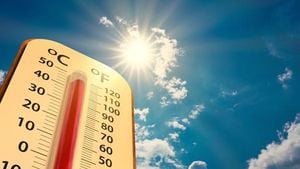U.S. consumer spending showed signs of resilience in February 2025, rebounding amid rising prices for goods and services, which has raised concerns about the potential for stagflation. The latest report from the Commerce Department revealed that consumer spending increased by 0.4% in February, following a downwardly revised decline of 0.3% in January, marking the first drop in two years. This rebound, however, fell short of economists' expectations for a 0.5% increase, indicating a cautious outlook for the economy.
The increase in spending was largely driven by a significant 1.4% surge in outlays on durable goods, including motor vehicles, recreational items, and furniture. However, spending on services saw a modest rise of only 0.2%. Notably, consumers cut back on discretionary spending, with expenditures at restaurants, hotels, and motels plummeting by 15.0%. Similarly, outlays at nonprofit institutions dropped 15.8%, likely reflecting the impact of federal funding cuts as the Trump administration implements a campaign to downsize government operations.
As prices continue to rise, the Personal Consumption Expenditures (PCE) price index, a key measure of inflation favored by the Federal Reserve, increased by 0.3% in February, matching the previous month's gain. Over the past year, PCE prices have risen by 2.5%, consistent with January's figures. Stripping out food and energy costs, the core PCE index rose 0.4%, marking the largest monthly increase since January 2024. Year-over-year, core inflation reached 2.8%, slightly above Wall Street's expectations of 2.7%.
The implications of these inflationary pressures are significant. Economists are concerned that President Trump's protectionist trade policies, characterized by a series of tariff announcements, may exacerbate inflation in the coming months. "We expect tariffs to slow real spending growth and push up prices in the coming months," stated Michael Pearce, deputy chief U.S. economist at Oxford Economics. He added that this combination of factors is likely to keep the Federal Reserve on an extended pause regarding interest rate changes.
Federal Reserve Chair Jerome Powell acknowledged last week that inflation has begun to rise, attributing part of this trend to tariffs. He emphasized that there may be delays in achieving further progress on inflation reduction throughout the year. The Fed's recent decision to hold interest rates steady at its March meeting reflects its cautious approach, with officials lowering their economic growth forecast for 2025 while simultaneously raising inflation projections.
Despite the uptick in consumer spending, the overall economic outlook remains tenuous. The first-quarter gross domestic product (GDP) estimates hover around a 1.0% annualized rate, a stark contrast to the 2.4% growth observed in the previous quarter. This slowdown has raised alarms about the potential for a recession, especially given the deteriorating business and consumer sentiment.
As the trade tensions escalate, the possibility of retaliatory tariffs from U.S. trading partners looms large. Economists warn that the tariffs not only widen the trade deficit but also create a ripple effect that could lead to higher prices for consumers across the board. The uncertainty surrounding these trade policies has prompted many consumers to front-load their spending to avoid price hikes, but the recent decline in spending suggests that this trend may be reversing.
In light of these developments, the Federal Reserve's median forecast anticipates two interest rate cuts later this year, reflecting a shift in strategy as officials navigate the delicate balance between fostering economic growth and controlling inflation. The current economic landscape is fraught with challenges, and as consumers adjust their spending habits in response to rising prices, the broader implications for the U.S. economy remain to be seen.
The recent economic data underscores the complexities of the current environment, where consumer behavior, inflationary pressures, and trade policies intersect. As the Federal Reserve continues to monitor these dynamics, the path forward remains uncertain, with both consumers and policymakers bracing for potential shifts in the economic landscape.
In summary, while consumer spending showed a rebound in February, the rising inflation and the impact of tariffs present significant challenges. The Federal Reserve's cautious stance reflects the need to navigate these turbulent waters carefully, as the economy grapples with the dual threats of inflation and sluggish growth.





